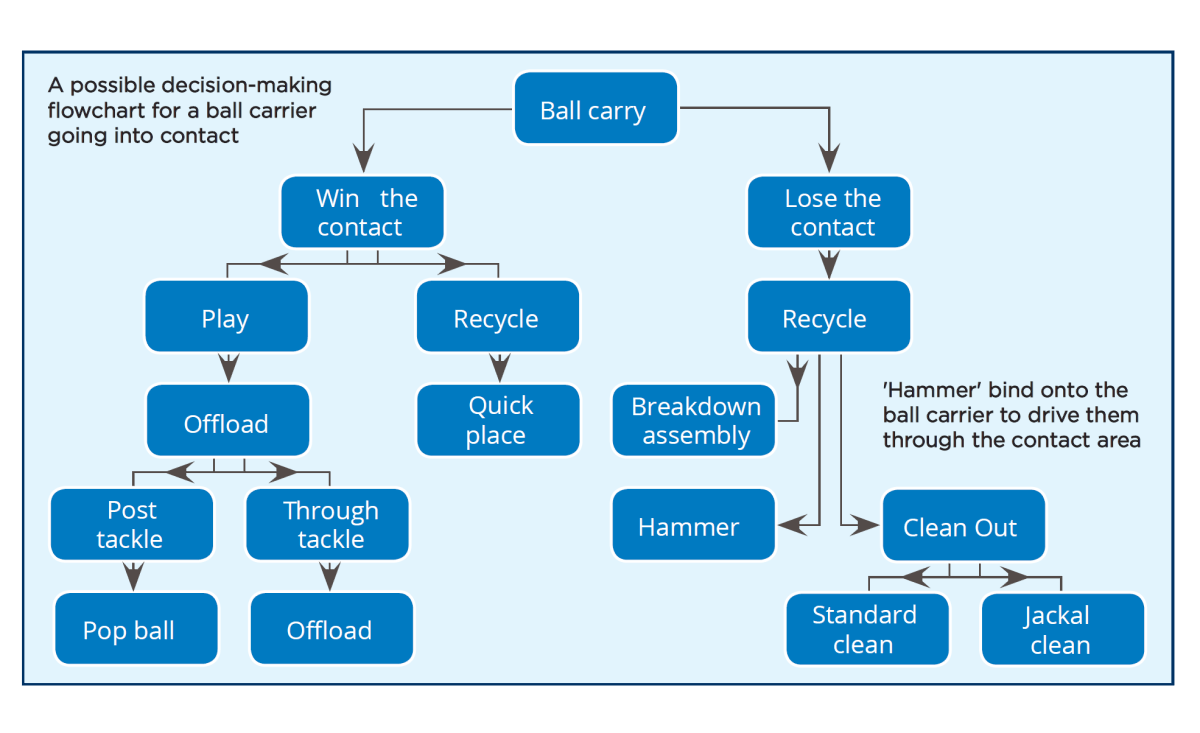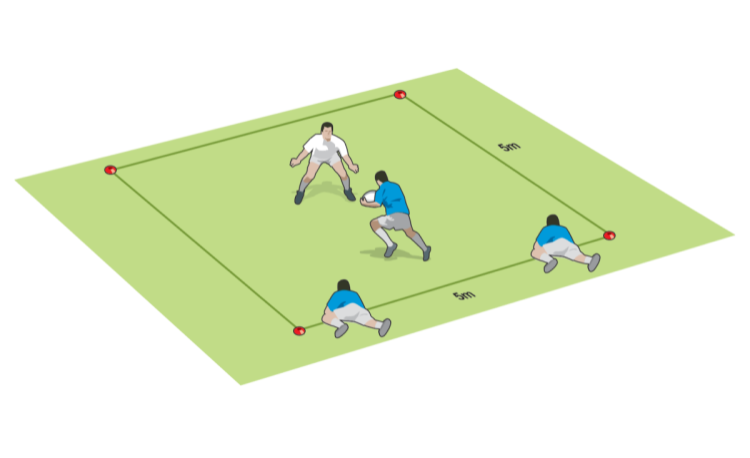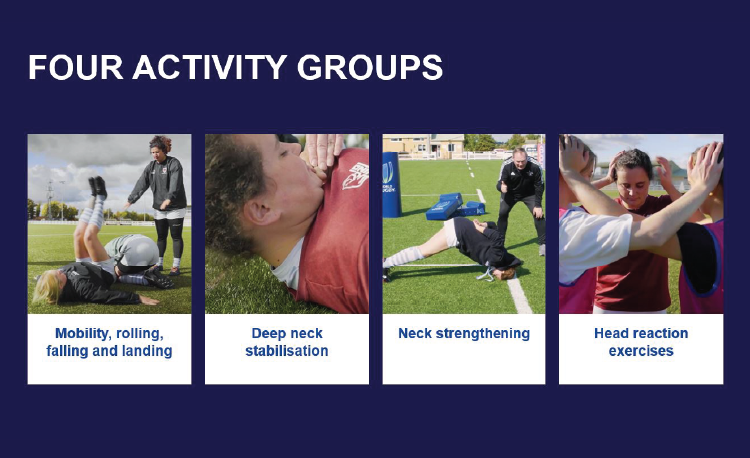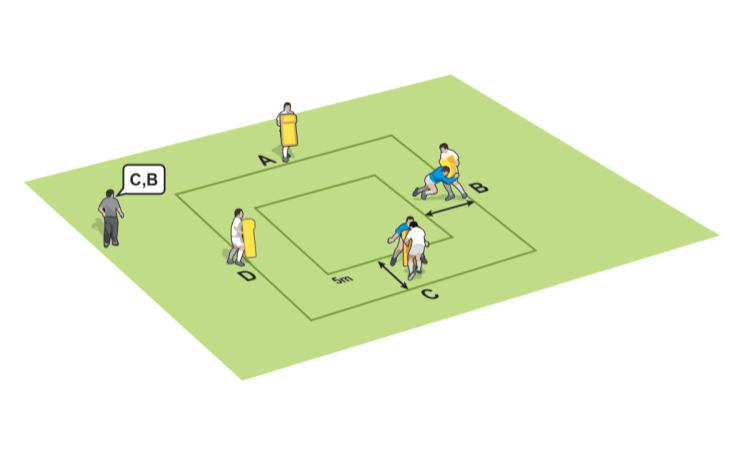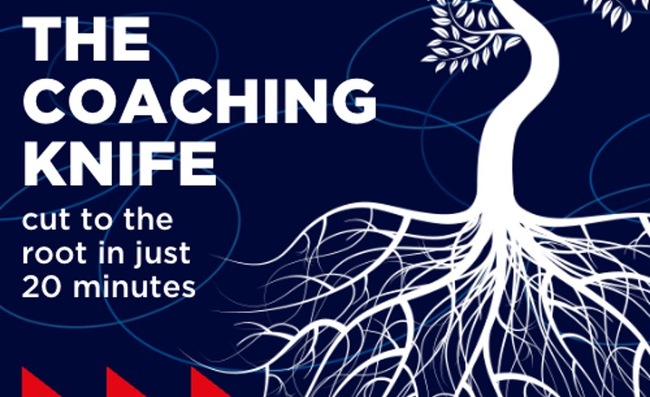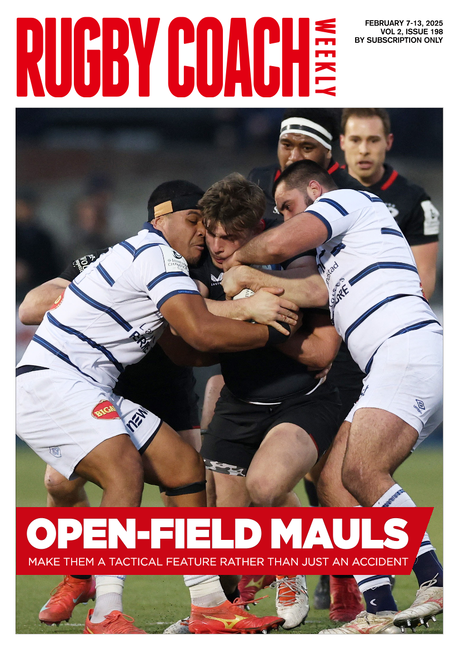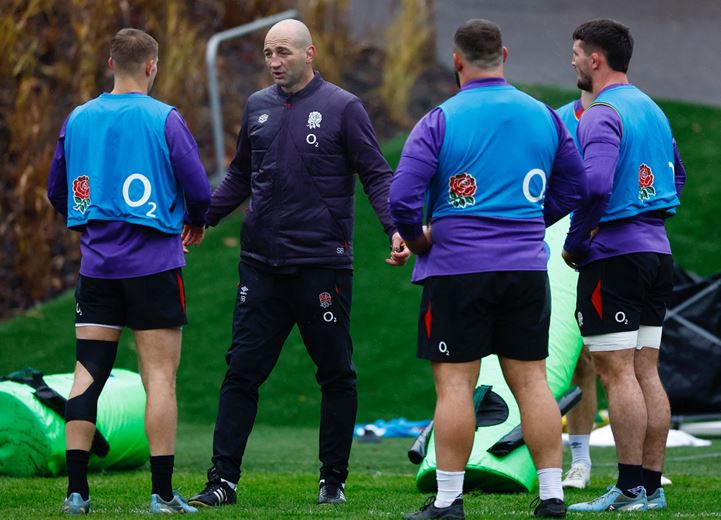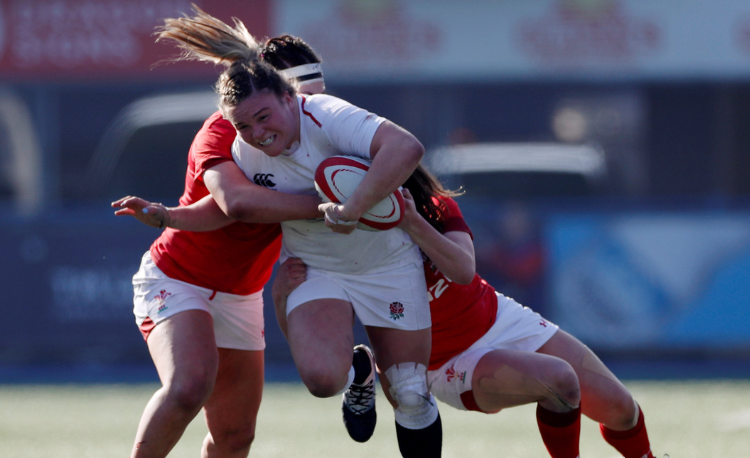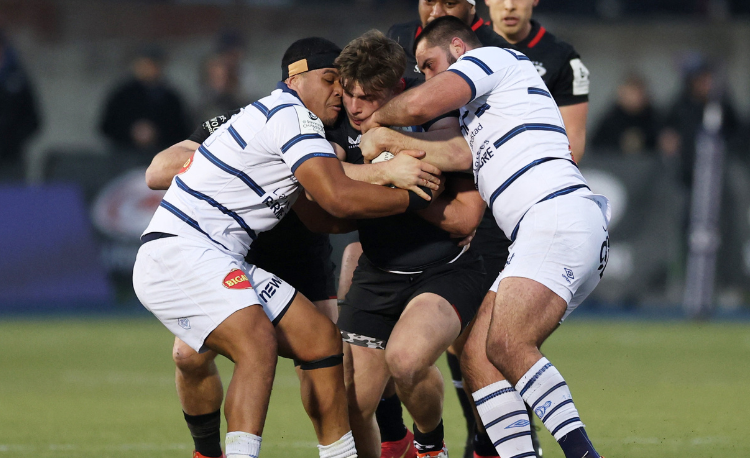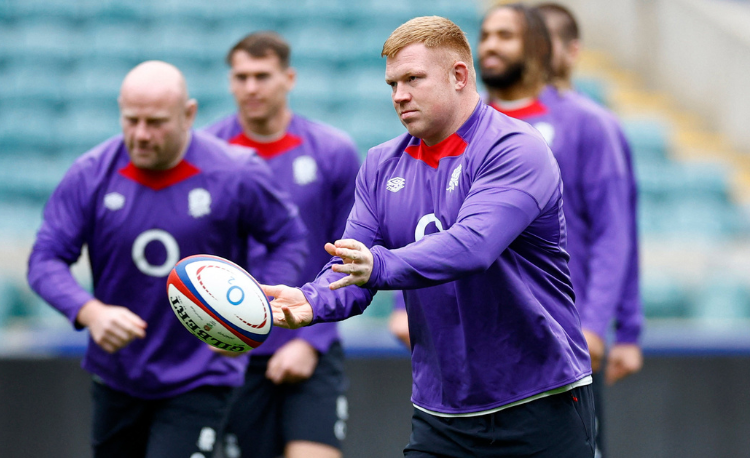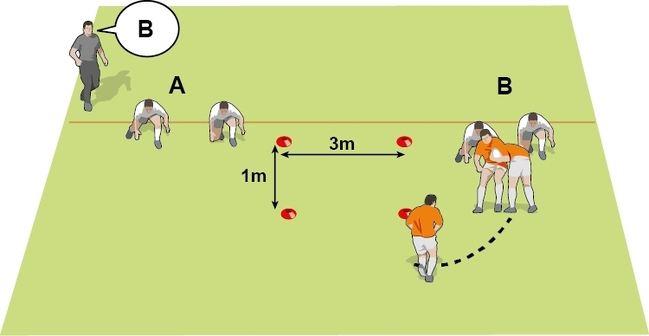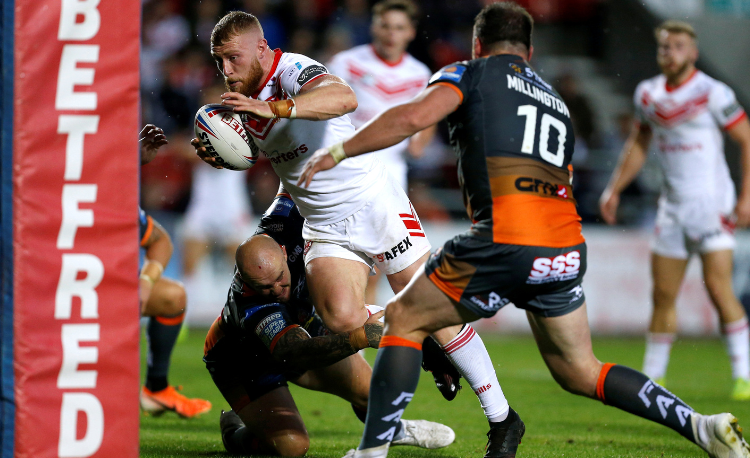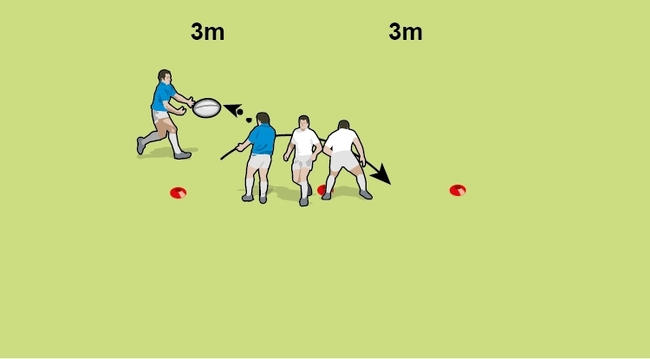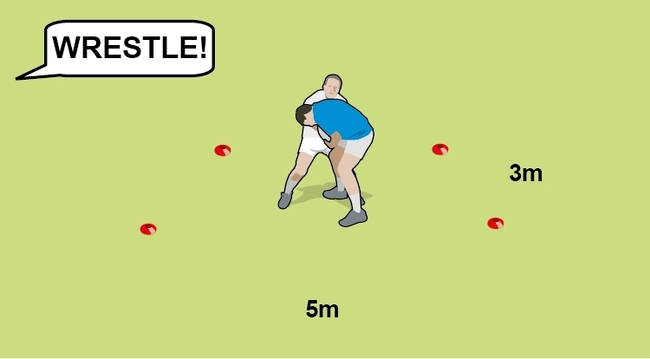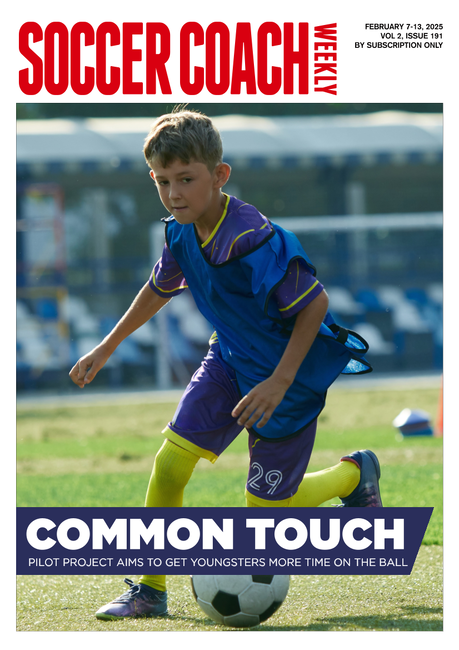The 'Four Fs' behind dominant ball carrying
Create opportunities by denting the defensive line and opening up spaces.
There are three main favourable outcomes from a dominant ball carry - an offload post-contact to continue play, a pop off the ground to a support player or a good place-and-quick-ruck ball.
A dominant ball carry is a step-by-step process. If any aren’t executed properly, the options to keep the ball available post-contact decrease significantly.
While fighting forward and then place techniques are trained with high repetition, these are last options which become available to a dominant ball carrier.
We need to concentrate first on the offload, then the pop and, finally, placement. That is why the four Fs - Feet, Fend, Fight, Finish - are so important.
Feet
A ball carrier should focus on changing direction to create space between themselves and a defender. They should go directly at a defender to entice them to square up and stop moving their feet.
If the carrier does this effectively, it is hard for a defender to regain their speed and close the space once they have changed direction, giving the ball carrier more space.
Fend
After creating space with the footwork, the key focus is to have the inside leg down as the ball carrier passes the defender.
This is designed to only offer ’hard parts’ - knee, hip, back and shoulder - for a defender to make contact with. Whereas, if the outside foot were up when passing the defender, the ball carrier would be offering up legs and stomach (see illustration in this activity).
The player should transfer the ball away from the oncoming defender and use their free arm to fend and keep the space that the feet created with a strong aggressive fend.
The two keys to a successful fend are:
- An accurate target zone: chest or shoulder for an upright defender and shoulder or head for a defender who has already dipped for contact.
- A fast, punch-like action with your fending arm. Holding a fend out for too long allows a defender to use it as a lever to grab. A fend should be retracted as fast as it was thrown.
FENDING: The importance of having your inside leg down as you pass the defender
WRONG TECHNIQUE - OUTSIDE LEG DOWN

The defender is hitting ‘soft spots’ like the stomach, diminishing the likelihood of the ball carrier fighting through that tackle.
CORRECT TECHNIQUE - INSIDE LEG DOWN

The defender is hitting ‘hard parts’ like the knee and hip, so the chances of the ball carrier fighting through the contact are much greater. Ideally, the defender doesn’t impact at all because they have been beaten by the feet and the fend. But in the event the carrier does get tackled, it is imperative the inside leg is down if they want to have the best chance of breaking the tackle.
Fight
The ball carrier should fight through the point of contact and accelerate through the back end.
This allows them to clear any loose arms and creates a clearer picture for not only the finish but also for any support runners looking for an involvement.
Finish
There are four main options to finish off the contact.
- Completely break the tackle and continue to run
- Offload
- Go to ground and pop
- Go to ground, fight on the ground and place the ball
The finish process depends entirely on the outcome of the first three steps and is a decision-making process that needs to be practised in both live and scenario-based drills during training.
If the three initial steps are accurate, the ball carrier should have completely broken the tackle.
They can then return the ball to two hands to give themselves options while continuing to run.
Ideally, the ball carrier can execute the offload with both hands. However, in most situations only one arm becomes available as the other has been used for a fend or is continuing to fight through contact.
Either way, the ball must always be delivered on the way up. A good offload rarely leaves the hands on the way down. It’s the same motion as a pop pass because it is given some air.
This allows the receiver time to collect the pass with relative ease and so continue to run at pace with the ball.
Related Files
Newsletter Sign Up
Coaches Testimonials

Gerald Kearney, Downtown Las Vegas Soccer Club

Paul Butler, Florida, USA

Rick Shields, Springboro, USA

Tony Green, Pierrefonds Titans, Quebec, Canada
Subscribe Today
Be a more effective, more successful rugby coach
In a recent survey 89% of subscribers said Rugby Coach Weekly makes them more confident, 91% said Rugby Coach Weekly makes them a more effective coach and 93% said Rugby Coach Weekly makes them more inspired.
Get Weekly Inspiration
All the latest techniques and approaches
Rugby Coach Weekly offers proven and easy to use rugby drills, coaching sessions, practice plans, small-sided games, warm-ups, training tips and advice.
We've been at the cutting edge of rugby coaching since we launched in 2005, creating resources for the grassroots youth coach, following best practice from around the world and insights from the professional game.
